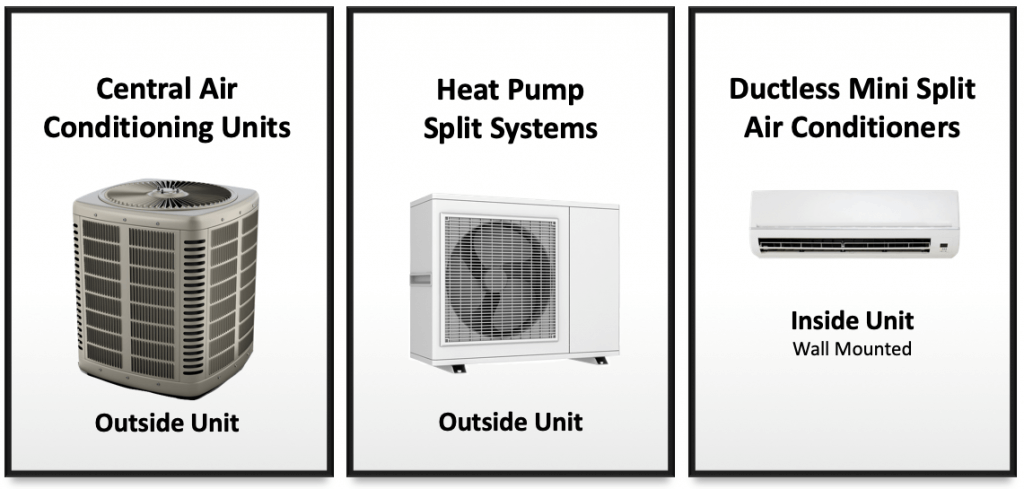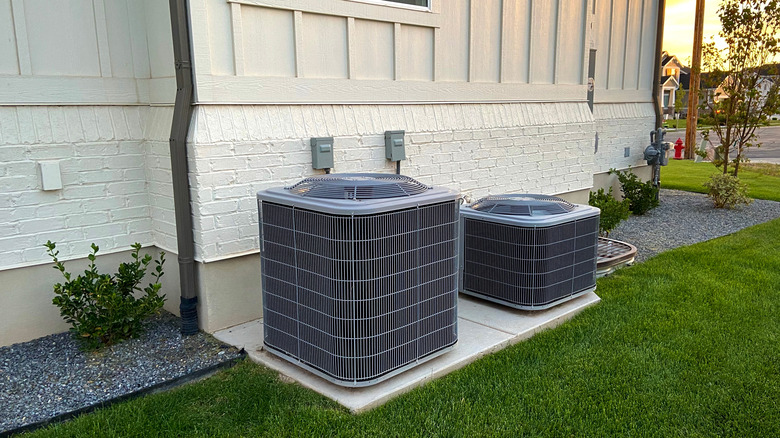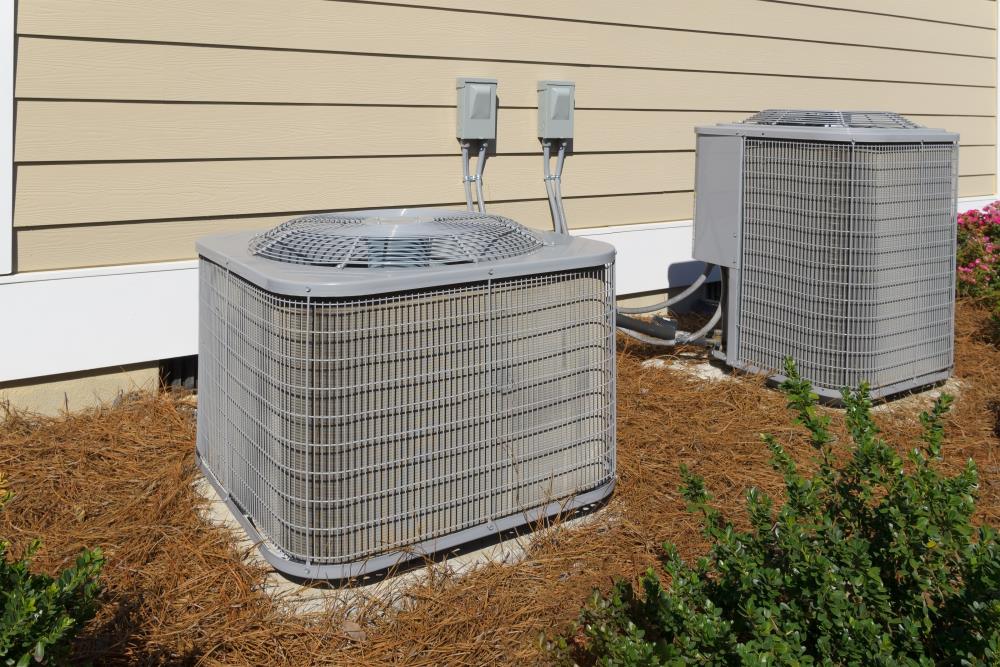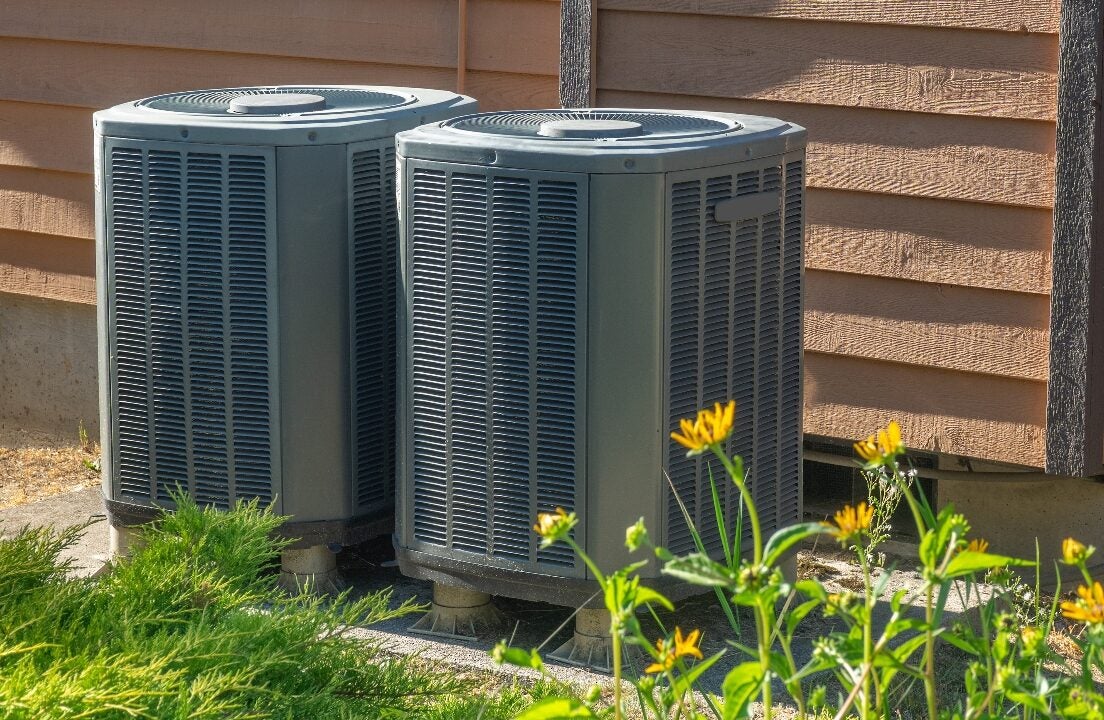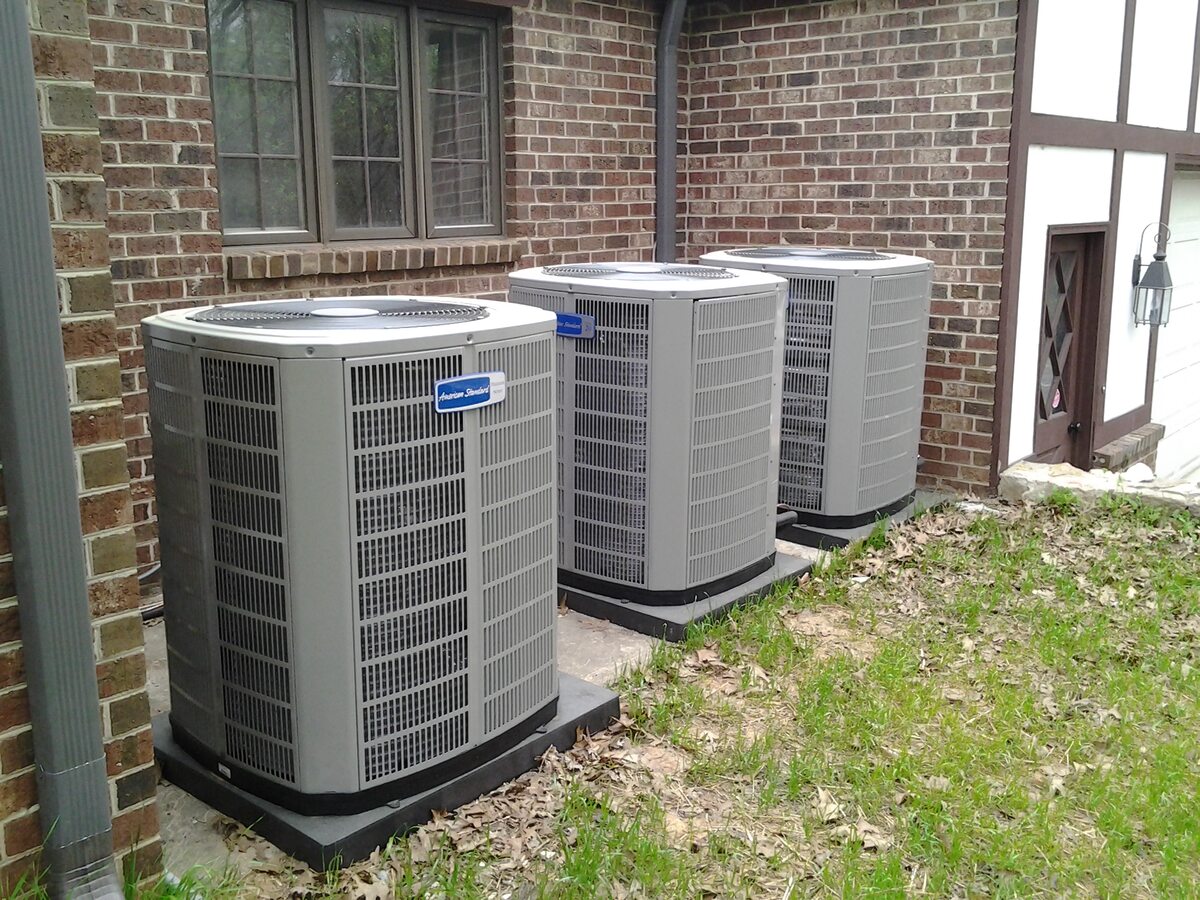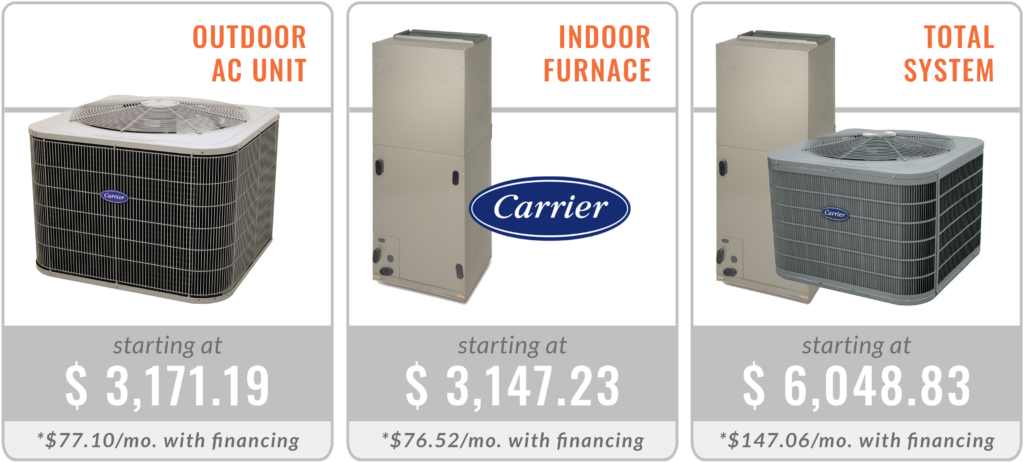How Much To Replace Central Air Conditioning Unit

Central air conditioning is a modern comfort we often take for granted, until it stops working. When the summer heat hits, a malfunctioning AC unit can quickly turn your home into an unbearable sauna. While some problems can be fixed with a simple repair, others might signal that it's time for a complete replacement. Figuring out when to repair versus replace, and understanding the costs involved, is crucial for making an informed decision.
When is it Time to Replace Your Central Air Conditioner?
Knowing when to replace your AC isn't always straightforward. Here are some key indicators that a replacement might be more cost-effective than ongoing repairs:
- Age of the Unit: Most central AC units last between 15-20 years. If your unit is nearing this age, replacement is likely a better long-term investment.
- Frequent Repairs: If you're constantly calling for repairs, the cumulative cost can quickly exceed the price of a new unit.
- Decreased Efficiency: An older unit loses efficiency over time, resulting in higher energy bills. Look for an increase in your electricity costs without a change in usage patterns.
- R-22 Refrigerant: If your unit uses R-22 refrigerant, it's nearing the end of its lifespan. R-22 is being phased out, making repairs increasingly expensive. Replacing with a unit that uses R-410A refrigerant (or more modern alternatives) is often the best option.
- Strange Noises: Loud banging, grinding, or hissing noises can indicate serious mechanical issues that are costly to repair.
- Inconsistent Cooling: If some rooms are colder than others, or if the unit struggles to maintain a consistent temperature, it may be failing.
Factors Influencing the Cost of AC Replacement
The cost of replacing a central AC unit varies widely based on several factors. Understanding these factors will help you get an accurate estimate and avoid surprises.
- Size of the Unit (BTU): The British Thermal Unit (BTU) rating indicates the cooling capacity of the unit. A larger home requires a higher BTU rating, which translates to a higher cost.
- Efficiency (SEER Rating): The Seasonal Energy Efficiency Ratio (SEER) measures the unit's energy efficiency. Higher SEER ratings mean lower energy bills but typically come with a higher initial price. A minimum SEER rating is mandated by federal regulations (currently 14-15 SEER depending on location), but you can opt for higher ratings for long-term savings.
- Type of Unit: There are different types of central AC systems, including split systems, packaged units, and ductless mini-splits. The type of system influences the cost. Split systems are the most common.
- Brand: Some brands are known for their reliability and efficiency, which can affect the price. Carrier, Trane, Lennox, and Rheem are generally considered top-tier brands, while others offer more budget-friendly options.
- Ductwork: If your existing ductwork is damaged, improperly sized, or contains asbestos, it may need to be repaired or replaced, adding to the overall cost.
- Installation Complexity: Difficult installations, such as those requiring extensive modifications to the ductwork or electrical system, will increase labor costs.
- Location: Labor costs vary significantly by region. Urban areas tend to have higher labor rates than rural areas.
- Permits and Inspections: Most jurisdictions require permits and inspections for HVAC replacements, which add to the overall cost.
- Additional Features: Features like smart thermostats, zoning systems, and air purifiers can add to the price of the installation.
DIY Assessment: Before Calling a Professional
Before calling an HVAC technician, there are a few simple checks you can perform to troubleshoot the problem yourself:
- Check the Thermostat: Ensure the thermostat is set to "cool" and the temperature is set lower than the current room temperature. Make sure the batteries are working.
- Inspect the Air Filter: A dirty air filter restricts airflow and can cause the unit to overheat or freeze. Replace it with a clean filter.
- Check the Outdoor Unit: Make sure the outdoor unit is free of debris, such as leaves, grass clippings, and branches. Clear any obstructions around the unit.
- Check the Circuit Breaker: Make sure the circuit breaker for the AC unit hasn't tripped. Reset it if necessary.
- Inspect the Condensate Drain Line: A clogged condensate drain line can cause water to back up and shut down the system. Use a wet/dry vacuum to clear any clogs.
Common Problems and DIY Solutions (With Caution!)
Warning: Working with electricity and refrigerant can be dangerous. If you're not comfortable performing these tasks, call a qualified HVAC technician.
- Frozen Evaporator Coil: This is often caused by low refrigerant, a dirty air filter, or restricted airflow. Try replacing the air filter and ensuring proper airflow. If the coil remains frozen, call a professional to check the refrigerant levels.
- Dirty Condenser Coils: Clean the condenser coils with a fin comb and a garden hose. Be careful not to damage the fins.
- Loose Wiring: Inspect the wiring connections for any loose or corroded wires. Tighten or replace any damaged wires. Always turn off the power at the circuit breaker before working with electrical components.
- Faulty Capacitor: A faulty capacitor can prevent the compressor or fan motor from starting. Replacing a capacitor requires electrical knowledge and should only be attempted by experienced DIYers. Capacitors can store a dangerous electrical charge even after the power is turned off. Discharge the capacitor before handling it.
Getting an Accurate Estimate for AC Replacement
The best way to get an accurate estimate for AC replacement is to obtain quotes from multiple qualified HVAC contractors. Here's what to consider:
- Get Multiple Quotes: Contact at least three different contractors to compare prices and services.
- Ask for a Written Estimate: Make sure the estimate includes a detailed breakdown of all costs, including the unit, installation, permits, and any additional work.
- Check the Contractor's Credentials: Verify that the contractor is licensed, insured, and bonded. Check online reviews and ask for references.
- Ask About Warranties: Inquire about the manufacturer's warranty on the unit and the contractor's warranty on the installation.
- Discuss Energy Efficiency Options: Talk to the contractor about the benefits of upgrading to a higher SEER rating. Consider available rebates and incentives for energy-efficient appliances.
- Understand the Scope of Work: Clarify what the installation includes, such as removing the old unit, installing the new unit, connecting the ductwork and electrical system, and disposing of the old refrigerant.
Components of a Typical AC Replacement Estimate
A detailed AC replacement estimate should include the following:
- Equipment Costs: The price of the new AC unit (condenser, evaporator coil, and air handler, if applicable).
- Labor Costs: The cost of labor for removing the old unit and installing the new one.
- Materials Costs: The cost of any additional materials needed for the installation, such as refrigerant lines, electrical wiring, and ductwork connectors.
- Permit Fees: The cost of obtaining the necessary permits from your local government.
- Disposal Fees: The cost of disposing of the old AC unit and refrigerant.
- Sales Tax: Sales tax on the equipment and materials.
- Warranty Information: Details about the manufacturer's warranty and the contractor's warranty.
Cost Breakdown: What to Expect to Pay
While prices fluctuate, here's a general idea of what you can expect to pay for AC replacement. Remember that these are just estimates, and the actual cost may vary depending on your specific situation.
- Basic AC Unit (13-14 SEER): $3,000 - $5,000 (including installation)
- Mid-Range AC Unit (15-17 SEER): $4,500 - $7,000 (including installation)
- High-Efficiency AC Unit (18+ SEER): $6,000 - $10,000+ (including installation)
- Ductwork Repair or Replacement: $500 - $3,000+ (depending on the extent of the work)
- Permit Fees: $50 - $500 (depending on your location)
Pro Tip: Consider financing options to spread out the cost of the replacement. Many HVAC contractors offer financing plans with low interest rates.
When to Call a Professional
While some AC issues can be resolved with DIY repairs, others require the expertise of a qualified HVAC technician. Call a professional if you encounter any of the following:
- Refrigerant Leaks: Handling refrigerant requires specialized equipment and training.
- Electrical Problems: Working with electrical components can be dangerous.
- Compressor Issues: The compressor is the heart of the AC unit, and repairs are complex and expensive.
- Major Ductwork Repairs: Extensive ductwork repairs require specialized tools and knowledge.
- You're Not Comfortable: If you're not comfortable performing any of the repairs yourself, it's always best to call a professional.
Replacing a central air conditioning unit is a significant investment, but it can provide years of reliable cooling and improved energy efficiency. By understanding the factors that influence the cost and taking the time to get multiple estimates, you can make an informed decision and choose the best option for your home and budget.
